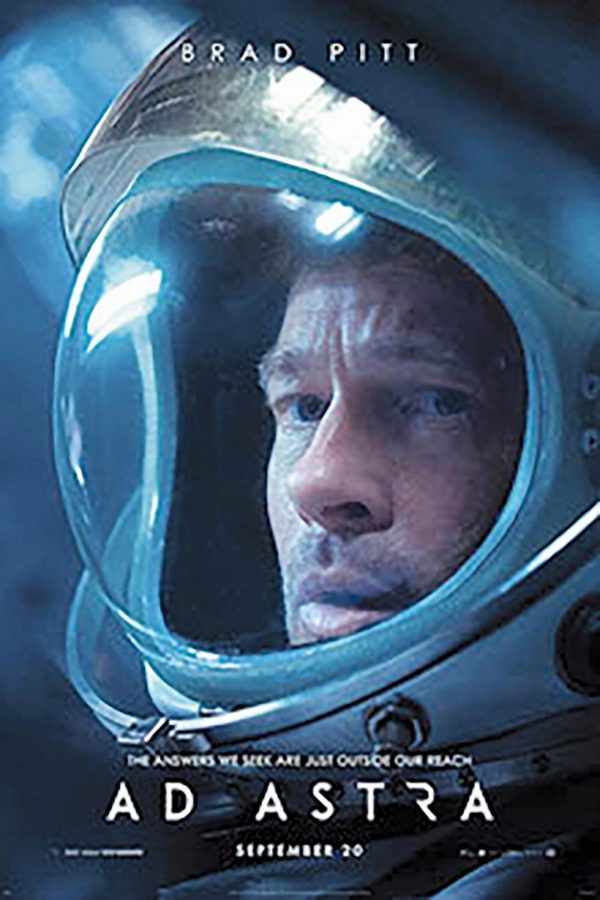New Brad Pitt sci-fi film explores complexities of emotion, loss
‘Ad Astra’ currently has an 83% on Rotten Tomatoes and is certified fresh among critics.
September 24, 2019
If Stanley Kubrick’s “2001: A Space Odyssey” is about man — as in humankind — and its relationship to technology, then James Gray’s “Ad Astra” starring Brad Pitt is about men and their relationship to their emotions.
“Ad Astra” is a space odyssey, as in a long wandering or voyage, following Pitt’s character Roy McBride as he travels space to find his long lost father, thought to be dead.
McBride’s father left when he was a child for a space exploration near neptune and was pronounced dead when communication with the ship was lost. The story is McBride coming to terms and confronting his father and the anger he feels towards him.
The story is emotion focused. The story is a therapy session for McBride. Throughout the story, McBride has to take psychological evaluations which are checks on his emotional state before he is allowed to fly. It helps the audience dive deeper into the character, and we get deeper and deeper as the story progresses. It is also told through Pitt’s narration, adding another level to his emotional depth.
McBride is on a mission to find his father and his strict military background and the rigid rules for the mission reflects the masculine idea of hiding emotion. It isn’t until he displays and confronts his true feelings about his father and displays his emotions does the story progress.
Other than just being a great piece to pick apart for meaning, there are some great technical elements that make this film worth seeing.
There is an attention to detail that is beyond anything I have seen in space movies since “2001: A Space Odyssey.” The reflection of McBride’s surroundings in his helmet is super realistic. It adds to the stylistic elements of the cinematography when inside the space crafts. There is also attention to details in the suit in every close up. In most space movies, the helmets always look freshly washed and brand new. “Ad Astra” uses helmets with scratches, smudges and fingerprints that give them a realistic look.
The sound mixing is phenomenal. When the film moves outside there is a focus on the emptiness of space. While there is dialogue, it sounds as if it’s coming through the radio in McBride’s suit instead of clearly recorded. There is score throughout the film, but you still feel as if it’s barely there. Somehow they got the silence of space to be louder than anything else in the theater.
Because the film is so quiet, you sit there waiting for something to happen, making it feel very slow. Its action scenes, while more than I expected, do not make it feel any faster, though it allows for more time to connect with McBride.
The focus is on Pitt’s character and not so much on the action. The line deliveries are very flat from everyone but somehow Pitt displays an outstanding physical performance. I felt the most connected to him when he engaged the audience with his inner monologue or psychological evaluations than when he was in a scene with any character.
Each character also serves to progress the story along with the two characters McBride interacts with the most serving as a guide to the next spaceship. They give him new pieces of information about his father along the way or change his luck in the story.
I can’t fault the lack of supporting character development since this story is meant to be focused on McBride. It leads to a climactic ending where it gives him the closure he needed to come out of the odyssey with and become a better person, which is ultimately the point of Joseph Campbell’s notion of the hero’s journey.
While not the most bang for your buck to see in IMAX, “Ad Astra” is still a must-watch for its character-driven story and attention to technical detail. It’s a film for those who love to analyze film. So beware, this might not be for the average theater goer but is worth a shot as an entry level thinker movie that bridges the gap between passive and deep lovers of film.


